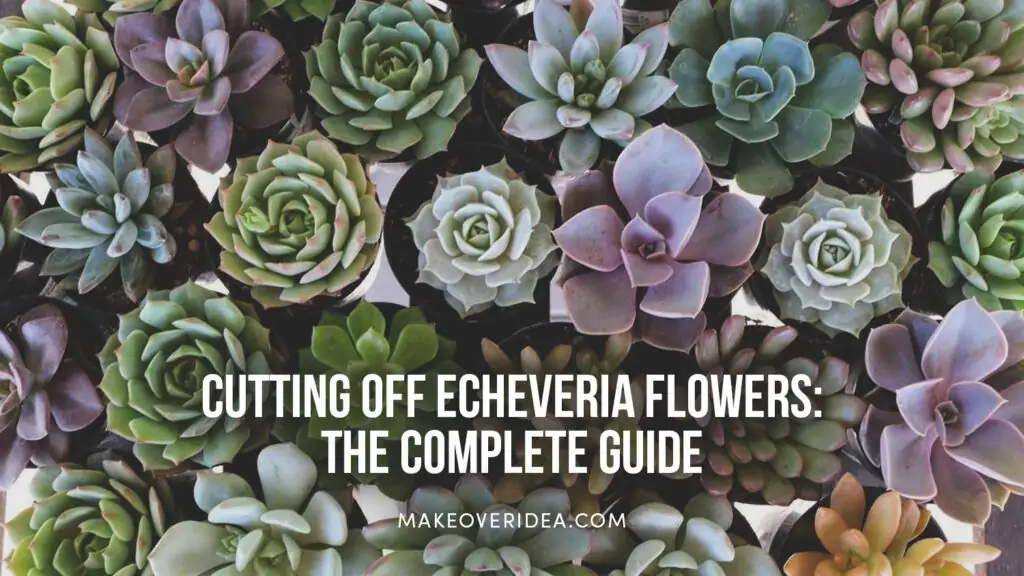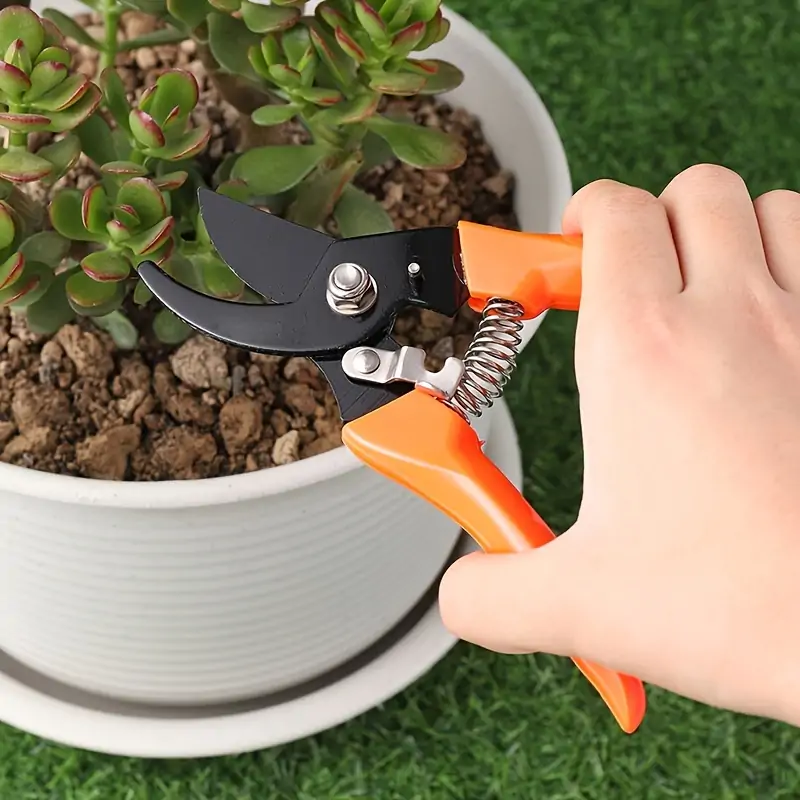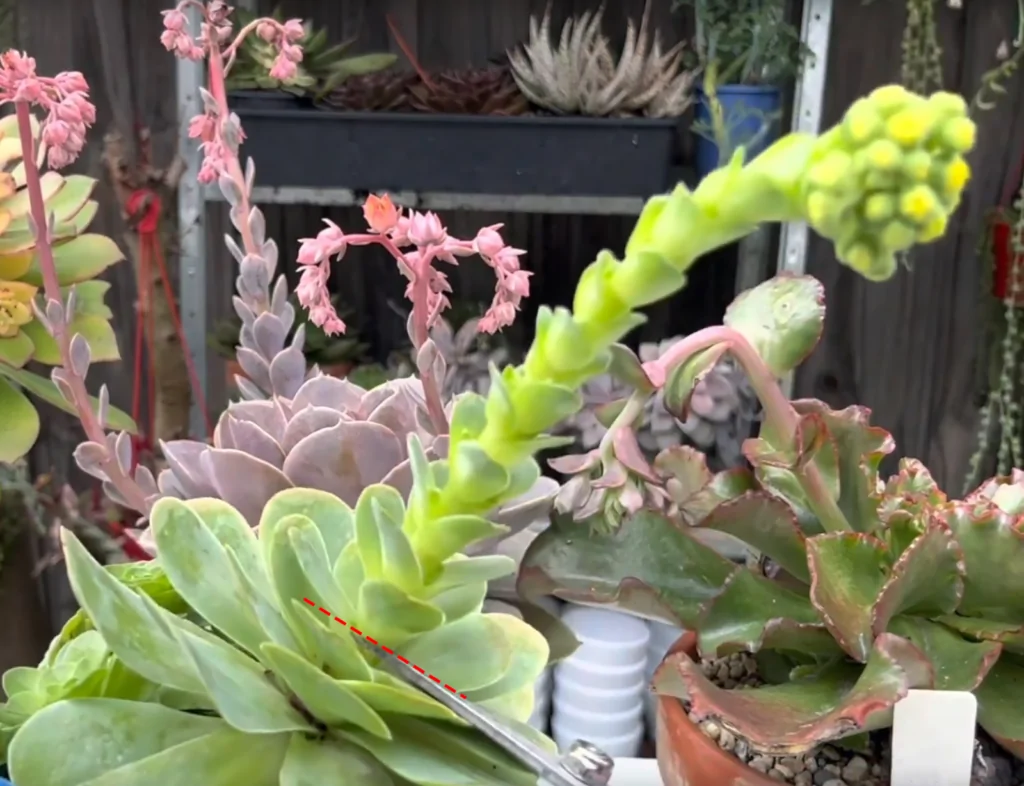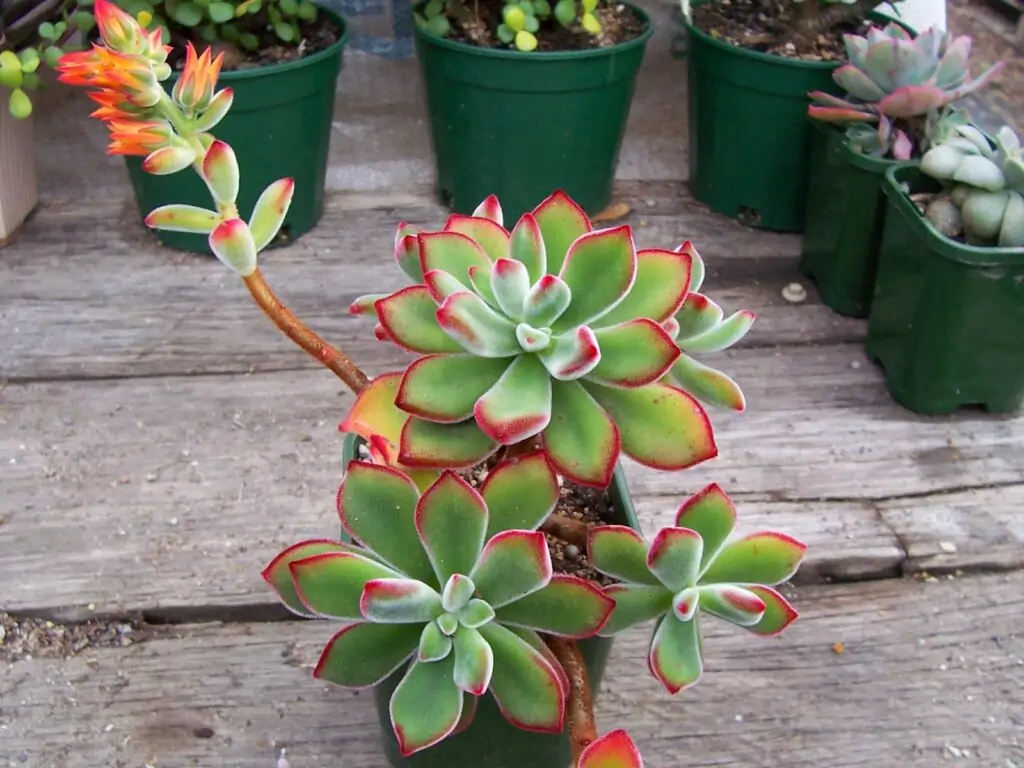Mastering the Art of Cutting Off Echeveria Flowers

While the blooms on your Echeverias might look absolutely stunning, cutting off Echeveria flowers may sometimes be necessary to maintain this succulent’s health. Let’s learn the ins and outs of removing Echeveria flowers, including their blossoming process and when and why to remove their blossoms.
Understanding the Blooming of Echeveria
Before we proceed to describe why cutting off the blooms on your Echverias might be necessary, let us go through the plant’s blooming process.
The Process of Echeveria Blooming
As part of their natural growth cycle, Echeverias create beautiful flowers. These flowers often emerge from the middle of the plant’s rosette on tall stalks. Beginning with the formation of a flower bud, the flowering process culminates in the emergence of bright, bell-shaped blooms.
Why Do Echeverias Bloom?
Echeverias produce flowers, which attract pollinators like bees and hummingbirds for reproduction. The visual value of the blossoms makes them a favorite of gardeners and succulent fans.
When and Why to Cut Flowers from Echeveria
Here are the two main reasons why cutting off your blooms is sometimes unavoidable.
Should Echeveria Flowers Be Cullen?
Deadheading, or the removal of spent flowers, is advantageous for Echeverias. It allows the plant’s energy to be redirected into making new leaves and offsets rather than maintaining spent blooms. In addition, removing Echeveria blossoms can prevent rot and pest problems.
Managing Lengthy Stems and Death Flowers
Sometimes Echeverias develop lengthy flower stems, making the plant leggy or imbalanced. This plant’s compact rosette shape can be preserved by removing these stems. Similarly, eliminating death blooms, or flowers that appear right before a plant dies, can extend its life by transferring its energy to other places.
How to Safely Prune Echeveria Flowers

Appropriate Instruments and Methods
To safely remove Echeveria blossoms, use clean, sharp scissors or pruners. While some experienced gardeners manage to prune their Echeverias using a knife, this method requires both a steady hand and a lot of practice and cannot be recommended.
Use rubbing alcohol to sterilize the blades and reduce the chance of infection. Grasp the flower stalk near its base and cut it cleanly, taking care not to harm the surrounding leaves or the main rosette.
Where to Prune Echeveria Branches

Cut the flower stalk as close to its base as feasible without causing damage to the rosette. This will assist the plant in recovering rapidly and continue to produce new leaves and offsets.
Care for Echeveria Following Flower Reduction
After cutting off is done, you need to take care of your succulents by following these steps.
Promoting Healthful Regrowth
After removing the flowers from your Echeveria plants, assist their recovery by providing correct care. Ensure your succulents receive sufficient sunlight, adhere to a consistent watering schedule, and select soil with good drainage. Fertilize your Echeverias with a diluted, balanced, water-soluble fertilizer during its growing season.
Echeveria Propagation from Floral Stems and Offsets
Although it is uncommon for these succulents to generate roots from flower stalks, you can try placing the clipped flower stems in water or soil to see if these cuttings form roots.
Nonetheless, propagation from offsets or leaves is more effective. Carefully remove offsets or leaves from the parent plant, wait a few days for these cuttings to callous over, and then place them on well-draining soil. Maintain soil moisture until roots form.
Avoiding Frequent Echeveria Blooming Problems

These beautiful plants need proper care: here are some tips you will find helpful.
Managing Overwatering and Tension
The effects of overwatering and stress on these plants include root rot, fading foliage, and poor flowering. You should only water your Echeveria when the soil is absolutely dry, and you should avoid getting water on the leaves. Ensure that your plant has adequate drainage and is not exposed to excessive temperatures.
Finding an Optimal Setting for Echeveria
Provide your plants with at least six hours of bright, indirect sunshine every day to promote healthy development and flowering. Their leaves can be scorched by harsh direct sunlight. Maintain the temperature between 65 and 80 degrees Fahrenheit (18 and 27 degrees Celsius), and keep the plants away from drafty windows or air vents.
FAQs
Depending on the variety and the growth conditions, these blossoms typically endure many weeks.
The flower stalks your Echeverias will gradually wither and die after blooming. To encourage the plant to concentrate its efforts on developing new leaves and offsets, remove the spent stalks.
Although it is uncommon for Echeverias to root from flower stalks, you can try to propagate them by placing the clipped flower stalk in water or soil. The success rate of propagation from offsets or leaves is higher.
Cutting off the top of this succulent usually triggers it to sprout new growth from the cut region. If the clipped top has healthy leaves or offsets, it may be used for propagation.
Conclusion
The simple act of cutting off Echeveria flowers is beneficial to the plant’s overall health and look. Knowing the flowering process of Echeverias and giving these succulents correct care will help your plants flourish and enjoy their beautiful blooms for years to come.